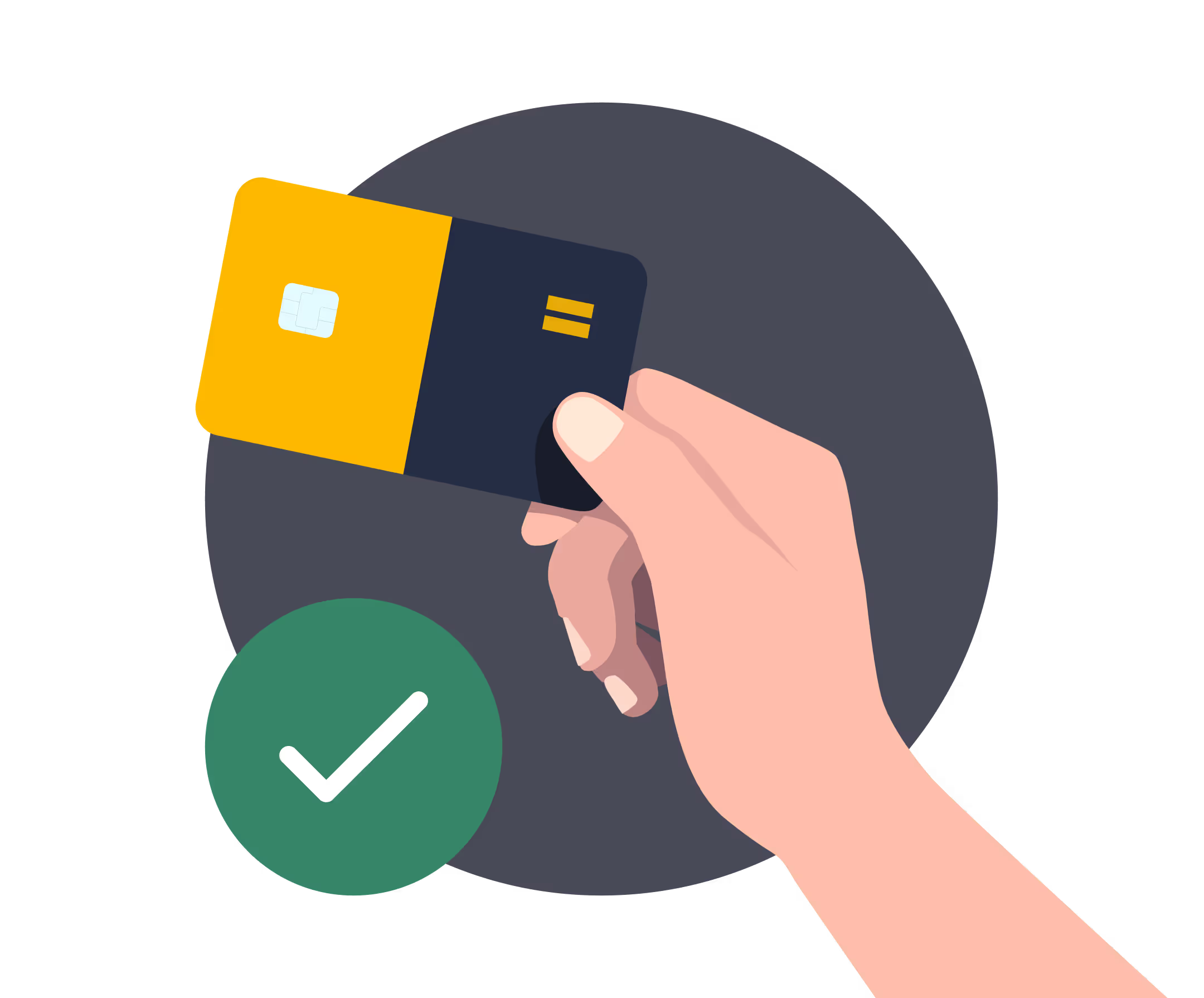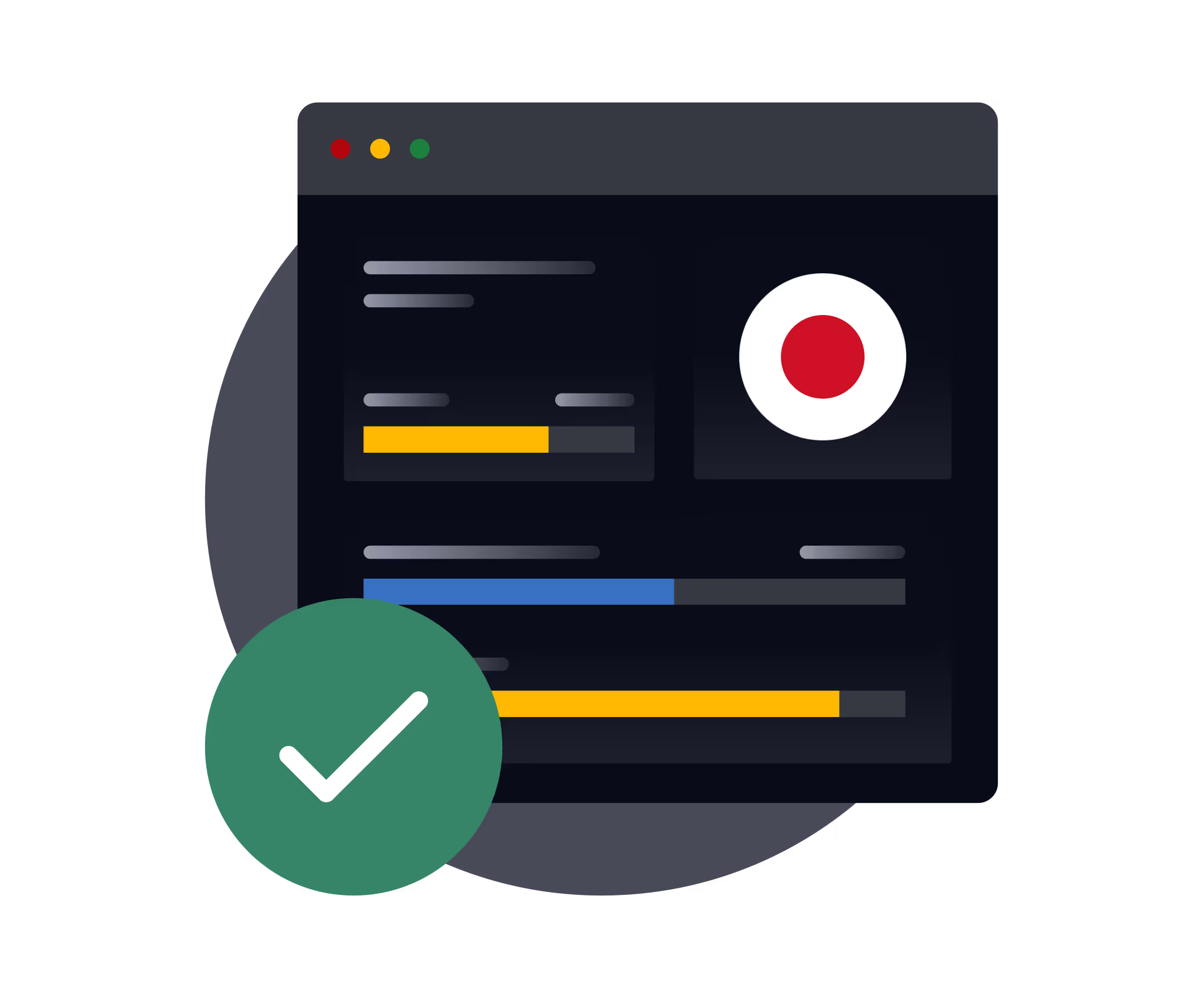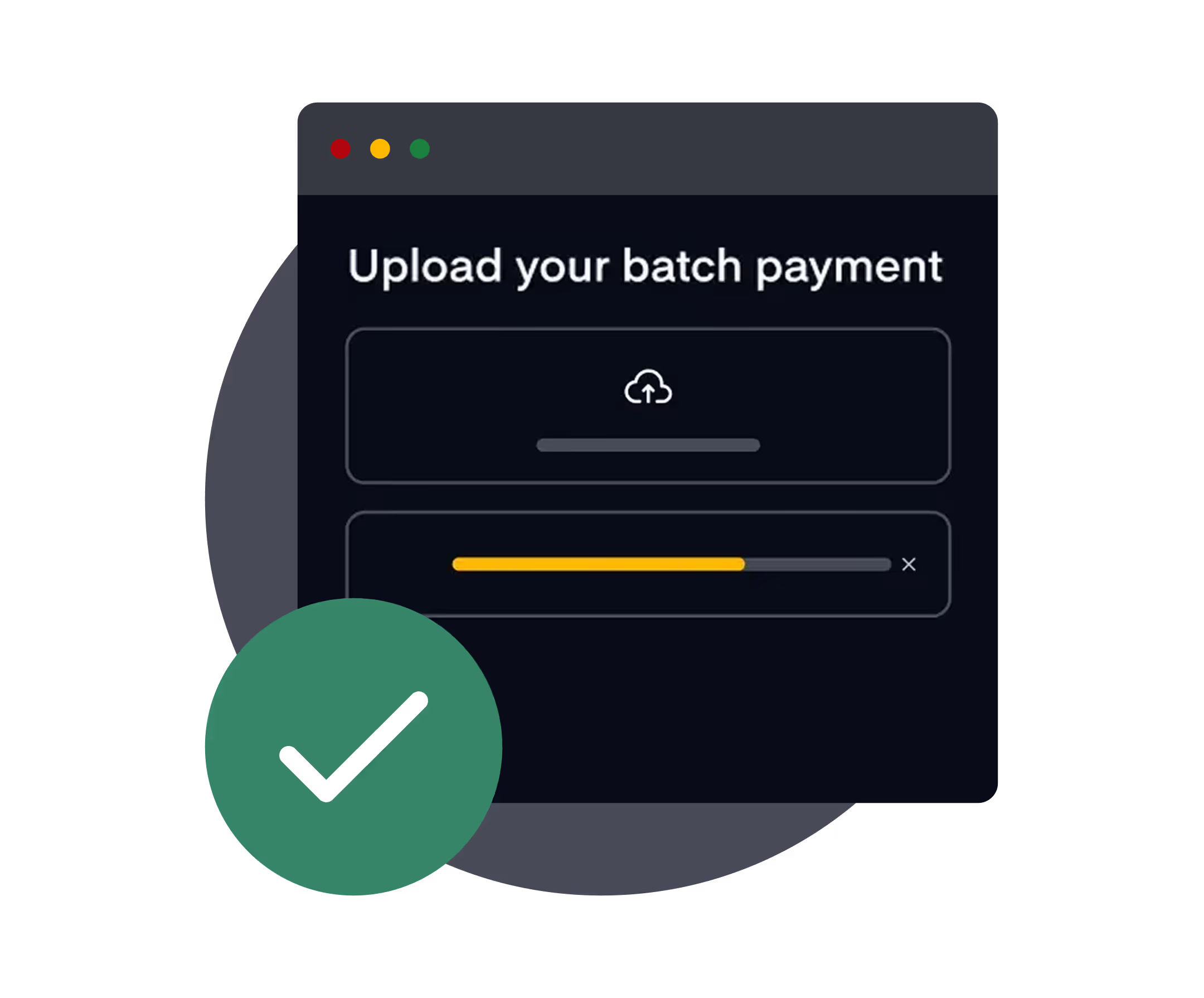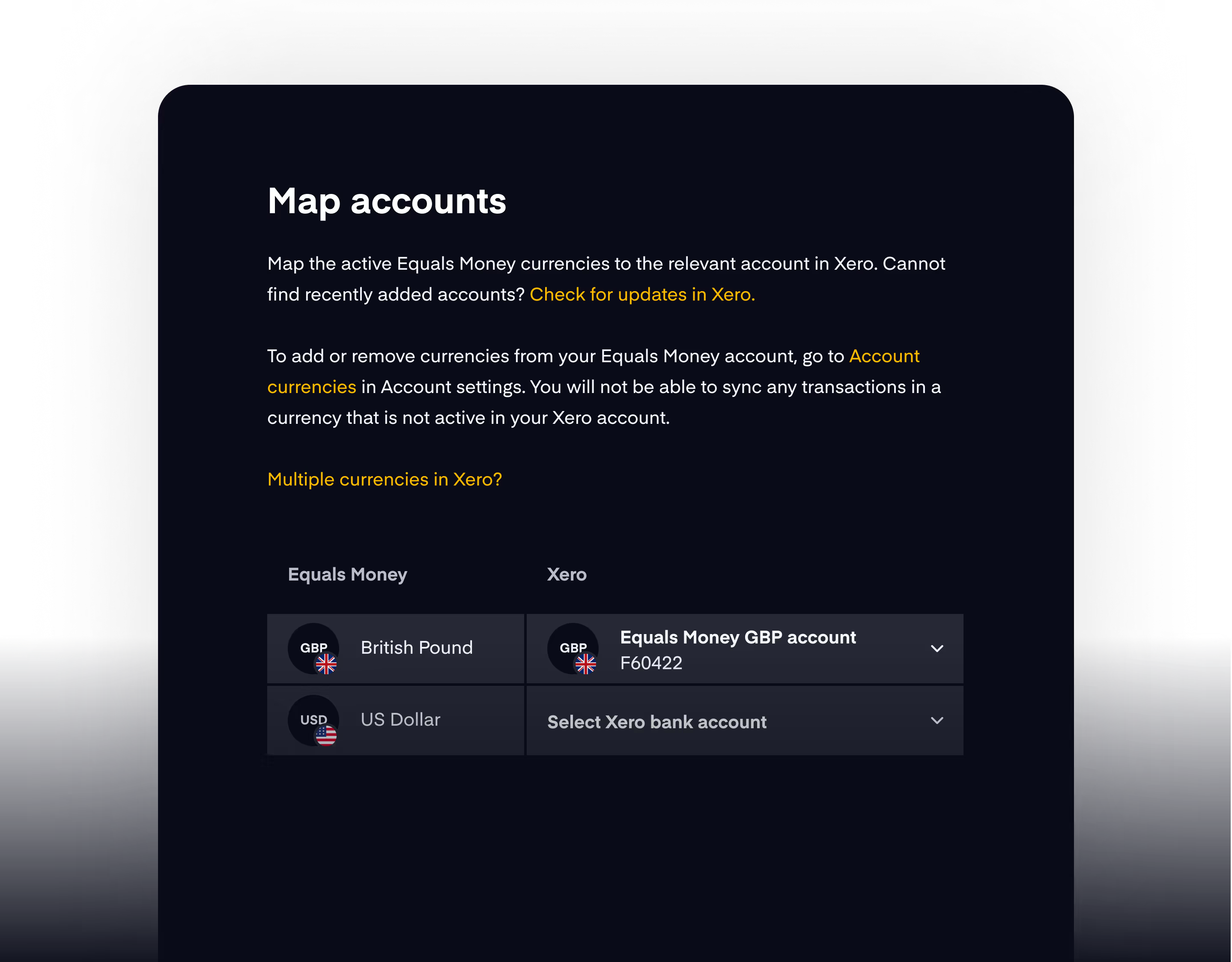JPY
The Japanese yen (JPY) is one of the world’s major currencies and a cornerstone of global finance.
As the official Japanese currency, the JPY is not only the third most traded currency on the foreign exchange (FX) market, after the US dollar and the euro (as of 2022), but it is also widely regarded as a safe-haven asset during times of economic uncertainty.
From international trade and investment flows to central bank reserves and speculative forex trading, the Japanese yen plays a critical role in the global financial and monetary system. Its liquidity, stability, and deep ties to Japan’s export-driven economy make the JPY an essential currency for traders, investors, and businesses around the world.
Yes, you can make purchases in JPY using an Equals Money card.
Equals Money cards support 21 global currencies (including JPY), allowing you to make local currency purchases in Japan. However, your card balance must include the required amount in JPY.

.png)
Yes, you can receive payments in JPY using an Equals Money account.
Equals Money accounts are equipped with a multi-currency IBAN, allowing you to receive payments and manage funds in 38 global currencies (including JPY), without the need for currency conversion.

Yes, you can make payments in JPY using an Equals Money account.
Equals Money allows outbound wire payments in 61 global currencies (including JPY). Read more on how to make an online payment here.
If you're an existing payments customer and do not have access to an online account, please speak to your account manager or get in touch with our team.

Yes, you can make bulk payments in JPY using an Equals Money account.
Equals Money allows bulk (batch) payments in 35 global currencies (including JPY).

Historical context of the Japanese yen
The Japanese yen has played a central role in Japan’s economic story for over 150 years.
Before the yen
Introduced by the Meiji government in 1871 through the New Currency Act, the yen replaced a fragmented system of feudal-era coins, clan-issued scrip, and regional currencies with a single, modern national currency designed to unify Japan’s economy.
Before the yen, Japan’s monetary system was highly decentralised under the Tokugawa shogunate, with hundreds of different coins and notes issued by local domains (han) and merchants, creating inefficiencies and inconsistencies in trade.
The introduction of the yen
The introduction of the yen (modelled on the European decimal system and pegged initially to silver) was a major milestone in Japan’s rapid modernisation during the Meiji Restoration, helping to facilitate domestic commerce, promote industrialisation, and support the country’s integration into the global economy.
In the late 19th century, Japan’s main trading partners were China and other Asian countries that used silver as their monetary base. Pegging the yen to silver made it easier for Japan to trade with its neighbours because the currency’s value aligned naturally with the silver-based systems they used. Additionally, Japan had a relatively large domestic supply of silver compared to gold at the time, making it practical to back its new currency with silver reserves.
As Japan’s international trade shifted more toward Western countries that used the gold standard, the silver peg became a disadvantage — especially after major silver price fluctuations in the global market. To strengthen its position and align with major trading partners like the UK, Japan officially adopted the gold standard (a monetary system in which a country’s currency was directly tied to a fixed quantity of gold) in 1897, which stabilised the yen and helped it gain credibility in global trade and finance.
Post World War II
After World War II, the Japanese currency underwent a significant currency devaluation and was pegged to the US dollar under the Bretton Woods System at a fixed exchange rate of 360 yen to one US dollar. This fixed rate lasted until 1971, when the Bretton Woods System collapsed and the JPY shifted to a floating exchange rate.
Since then, the Japanese currency has become one of the most traded currencies globally, known for its role as a safe haven currency during times of global uncertainty.
Currency symbol
The currency symbol for the Japanese yen is ¥, a stylised letter “Y” with two horizontal lines through it.
This symbol is recognised worldwide as representing the Japanese currency and is used on price tags, invoices, and financial services documents.
In Japan, the ¥ symbol appears before the numerical amount, for example, ¥5,000, indicating 5,000 yen. While the yen shares the same symbol with the Chinese yuan, context typically makes it clear whether the reference is to JPY or CNY.
ISO code
The official ISO currency code JPY is used for the Japanese yen.
This three-letter code is universally used in banking, finance, forex trading, money transfers, exchange rates, and international payments to distinguish the Japanese currency from other currencies with similar symbols.
For example, on currency exchange boards and trading platforms, you will see currency pairs like USD/JPY or EUR/JPY, where JPY always identifies the Japanese yen. The ISO code system helps standardise global transactions and ensures clarity in cross-border dealings where multiple currencies are involved.
Central bank
The Bank of Japan (BoJ) is the central bank and authority responsible for managing the issuance and regulation of the Japanese currency.
While the BoJ issues Japanese banknotes, Japanese coins (yen coins) are actually minted by the Japan Mint, which is overseen by the Japanese Ministry of Finance. So, technically, both the BOJ and the Ministry of Finance play a role in putting JPY into circulation.
Established in 1882, the Bank of Japan is one of the oldest central banks in the world. Its primary mandate is to maintain price stability and foster the soundness of Japan’s financial system.
The Bank of Japan sets key interest rates, implements monetary policy, and conducts currency market operations that can influence the value of the JPY. In recent decades, the Bank of Japan has been notable for pioneering unconventional monetary policy tools such as quantitative easing and negative interest rates to combat deflation and stimulate economic growth.
The BoJ’s decisions and policy statements are closely watched by forex traders, as they can significantly impact the strength and volatility of the JPY in global markets.
Read more about the Bank of Japan's interest rate decisions here - When is the next Bank of Japan interest rate decision?
What are negative interest rates?
Negative interest rates mean that instead of earning interest on deposits held at the central bank, financial institutions pay interest to the central bank for holding their excess reserves. In Japan’s case, the BoJ sets the policy-rate balance portion of banks’ reserves at a slightly negative rate, effectively charging them for parking excess funds rather than lending them out.
Denominations
The Japanese yen is issued in a variety of Japanese banknotes and yen coins to accommodate all transaction sizes.
Japanese banknotes are printed in denominations of 1000, 2000, 5000 and 10000 yen (¥1,000, ¥2,000, ¥5,000, and ¥10,000). The ¥2,000 note is rare and mainly issued for commemorative purposes, so it is less commonly seen in circulation. The variety of denominations makes the JPY practical for everything from making purchases at vending machines to larger business transactions.
Yen coins minted in six denominations: ¥1 (aluminium), ¥5 (brass, with a hole in the centre), ¥10 (bronze), ¥50 (cupronickel, also with a hole), ¥100 (cupronickel), and ¥500 (nickel-brass, one of the highest-value coins in the world).
Currency subunit
The official subunit of the Japanese currency is the sen, where 1 yen equals 100 sen.
Historically, silver coins in denominations like 50 sen and 20 sen and coins as small as 1 sen and 5 sen were used, especially during the early years of the JPY. However, due to post-war inflation and the modern economy’s price levels, sen denominations have disappeared from daily use since the mid-20th century.
Today, the yen is treated as a whole-number currency in daily life — prices are rounded to the nearest whole JPY, and transactions do not involve fractions of a yen. Therefore, only yen coins are produced and circulated by the Japan Mint.
Although the sen still exists officially, it appears only in some financial or legal contexts and is not used in everyday commerce.
Official name and common nicknames
The official name of Japan’s currency is the yen, which comes from the Japanese word “円” (pronounced “en”), meaning “circle” — a nod to the round shape of coins.
Within Japan, people simply say “en” when talking about prices or money, such as “sen-en” for 1,000 yen.
In forex trading circles, the JPY is often nicknamed “the yen” or “the Japanese yen”. Among traders, phrases like “trading the yen” or “yen crosses” (referring to pairs that include JPY) are common shorthand for discussing the Japanese currency in the context of the foreign exchange market.
Common JPY forex trading pairs
The Japanese yen is one of the most traded currencies on the global forex market, known for its liquidity and role as a safe-haven currency during times of market stress.
One of the most commonly held currencies in global foreign exchange reserves, JPY reflects Japan’s economic strength and the yen’s importance in international trade and finance.
The most popular JPY forex pair is USD/JPY (US dollar/ Japanese yen), which measures the exchange rate between the US dollar and the Japanese yen — this pair alone accounts for a significant share of daily forex turnover worldwide.
Other major pairs include:
- EUR/JPY (euro/ Japanese yen)
- GBP/JPY (British pound sterling/ Japanese yen)
- AUD/JPY (Australian dollar/ Japanese yen)
Many traders use JPY pairs to hedge risk or take advantage of interest rate differentials. The yen’s reputation as a funding currency for carry trades means its value can fluctuate sharply when risk and global market sentiment shifts, making JPY pairs a staple for active forex traders and international money transfers.
















